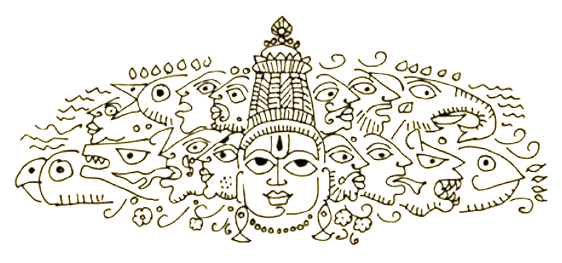The Kama Gita teachings offer timeless wisdom that helps us navigate the complexities of desire, pleasure, and duty in modern life. In the Mahabharata, Lord Krishna imparts valuable insights to Yudhishthira, teaching him how to manage his desires while staying true to his moral and spiritual duties. This ancient wisdom is still incredibly relevant today, offering guidance on balancing our personal desires with our larger purpose in life.
In a world where desires and pleasures are constantly pursued, understanding the essence of the Kama Gita can help us make conscious choices that align with our responsibilities, relationships, and long-term happiness.
What Are the Kama Gita Teachings?
The Kama Gita is a dialogue between Lord Krishna and Yudhishthira, where Krishna addresses the nature of desires (Kama) and how they should be managed. Unlike the traditional Kama Sutra, which focuses on sexual pleasure, the Kama Gita teachings explore how to approach desires in a way that aligns with Dharma (righteousness) and Artha (prosperity). Krishna encourages moderation, self-control, and ethical behavior, teaching that desires, when balanced with duty, can lead to spiritual growth.
What Krishna Said to Yudhishthira in the Kama Gita (Literally)
In the Mahabharata, the Kama Gita begins with a reflection on the nature of desires. Yudhishthira, in his wisdom, questions Krishna about the role of pleasure in human life. He asks how one should manage desires while still fulfilling their duties. Krishna responds with the following literal advice:
“Desire is inherent in human nature, but it should not be followed blindly. It must be aligned with righteousness (Dharma) and the greater good. A person should not allow their desires to overpower their sense of duty. When desires are pursued with wisdom and moderation, they lead to fulfillment; when pursued with selfishness, they lead to destruction.”
“Desire must always be controlled by the intellect and guided by moral law. Just as a river can be directed to irrigate fields for the benefit of many, desires too should be directed towards productive and ethical goals.”
“The highest form of desire is that which leads to spiritual growth and liberation (Moksha). A person who desires spiritual fulfillment, while also fulfilling their worldly responsibilities, achieves the ultimate peace.”
The Role of Desire in the Kama Gita Teachings

Krishna acknowledges that desires are a natural part of human life. The pursuit of pleasure, while often seen as indulgent or even selfish, is not to be rejected entirely. Instead, Krishna emphasizes that desires should be approached with mindfulness and wisdom. By practicing moderation and ensuring that desires do not lead to harm or imbalance, one can achieve a fulfilling and harmonious life.
“Yudhishthira, hear what Kama, god of craving, says about himself. He who seeks to destroy craving with weapons ends up craving those very weapons. He who seeks to destroy craving with charity ends up craving charity. He who seeks to destroy craving with scriptures ends up craving scriptures. He who seeks to destroy craving with truth ends up craving truth. He who seeks to destroy craving with austerities ends up craving austerities. He who seeks to destroy craving with renunciation ends up craving renunciation. Craving cannot be destroyed, but it can be put to good use by locating it in dharma. So seek to destroy craving with the pursuit of dharma. You will end up craving dharma! And that will be good for the whole world, for you will then conduct more and more exchange, bring prosperity to the world, liberating yourself in the process from all obligations, enabling others to give without expectations.”
Krishna to Yudhishthira in Kama Gita
The Kama Gita teachings remind us that desires, when pursued with the right intentions, are not inherently wrong. However, they must be tempered by righteousness and a sense of duty. This teaching is particularly relevant in today’s world, where desires often push people to chase instant gratification and material success at the cost of long-term well-being.
Balancing Desire and Righteousness: The Key to a Fulfilling Life
Krishna’s message to Yudhishthira is clear: desires must align with one’s higher duties and responsibilities. In the Mahabharata, Yudhishthira is a king who must balance personal pleasure with the welfare of his people. Similarly, in modern times, balancing our desires with our roles in family, work, and society is essential for a fulfilling life.
The Kama Gita teachings highlight that when our desires are in harmony with our duties and the greater good, they lead to peace and fulfillment. Conversely, when desires are selfish or cause harm, they lead to suffering and discontent.
The Three Types of Desires in the Kama Gita
One of the key elements of the Kama Gita teachings is the categorization of desires into three types:
- Sattvic Desires (Pure Desires): These desires are aligned with goodness, selflessness, and spiritual growth. Pursuing Sattvic desires leads to harmony with oneself and others.
- Rajasic Desires (Passionate Desires): These desires are driven by attachment, ego, and ambition. While they may bring temporary satisfaction, Rajasic desires often lead to stress and dissatisfaction.
- Tamasic Desires (Ignorant Desires): These desires stem from ignorance, laziness, or indulgence without understanding. Tamasic desires can lead to spiritual and emotional stagnation.
By recognizing the different types of desires, we can make more informed choices and focus on desires that bring us closer to our highest purpose.
Krishna’s Wisdom on Desire in Modern Life

In today’s fast-paced and materialistic world, the Kama Gita teachings are more relevant than ever. We live in a society that often encourages the pursuit of wealth, fame, and pleasure above all else. However, Krishna’s teachings on desire remind us that true happiness does not come from external possessions or fleeting pleasures. Instead, it comes from living a life aligned with our values, responsibilities, and higher purpose.
The Kama Gita teachings urge us to examine our desires and ask ourselves: Are these desires leading us towards a fulfilling life, or are they distracting us from our deeper goals? By practicing self-awareness and mindful living, we can navigate the complexities of desire in a way that promotes long-term well-being and spiritual growth.
Implications of the Kama Gita Teachings in Today’s World
The Kama Gita serves as a guiding light for anyone struggling to reconcile personal desires with the demands of modern life. Whether it’s in our careers, relationships, or personal ambitions, Krishna’s wisdom helps us navigate the delicate balance between enjoying life’s pleasures and fulfilling our duties.
In today’s context, these teachings are particularly helpful in the following ways:

- Mindful Pursuit of Desires: In a world dominated by instant gratification, Krishna’s teachings remind us that mindfulness and moderation are key to a fulfilling life. Instead of chasing every desire, we should learn to manage them thoughtfully.
- Balancing Work and Personal Life: The Kama Gita teachings encourage us to balance our desires for material success with our responsibilities to family, community, and the self.
- Spiritual Growth: Ultimately, the Kama Gita teaches that the highest desire should be the pursuit of spiritual fulfillment. Material pleasures are temporary, but spiritual growth offers lasting peace and contentment.
Conclusion: The Path to a Harmonious Life
The Kama Gita teachings offer profound wisdom that helps us navigate the challenges of desire, duty, and spirituality. Krishna’s message is clear: desires are a natural part of life, but they must be approached with self-control, wisdom, and a commitment to righteousness. By balancing desires with our moral duties, we can lead a life that is both fulfilling and meaningful. In today’s world, where the pursuit of material success often eclipses spiritual growth, the Kama Gita teachings provide a much-needed reminder that true happiness comes from aligning our desires with a higher purpose. By integrating Krishna’s timeless wisdom into our daily lives, we can create harmony between our personal desires, responsibilities, and spiritual journey, ultimately leading to a more balanced and contented life.
FAQs about the Kama Gita Teachings
The Kama Gita is a teaching from Lord Krishna to Yudhishthira, where Krishna explains how to balance desires (Kama) with righteousness (Dharma) and spiritual growth.
The Kama Gita teachings offer timeless wisdom on balancing personal desires with responsibilities, providing guidance for achieving a fulfilling, harmonious life in today’s world.
The three types of desires in the Kama Gita are Sattvic (pure desires), Rajasic (passionate desires), and Tamasic (ignorant desires), each impacting one’s life differently.
Yes, desires can be harmful if they lead to selfishness, attachment, or imbalance. The Kama Gita teaches that desires should be pursued in alignment with Dharma and without causing harm.
Krishna suggests that we control our desires through self-discipline, mindfulness, and aligning them with our moral duties and spiritual growth.
Desires are natural, but they must be managed wisely. The highest desire, according to Krishna, is the pursuit of spiritual fulfillment, which transcends material desires.
Apply the Kama Gita teachings by practicing moderation, being mindful of your desires, and ensuring that they align with your values, duties, and spiritual goals.
He who seeks to destroy craving with weapons ends up craving those very weapons. He who seeks to destroy craving with charity ends up craving charity. He who seeks to destroy craving with scriptures ends up craving scriptures. He who seeks to destroy craving with truth ends up craving truth. He who seeks to destroy craving with austerities ends up craving austerities. He who seeks to destroy craving with renunciation ends up craving renunciation. Craving cannot be destroyed, but it can be put to good use by locating it in dharma.
















